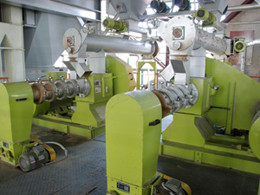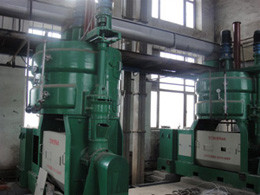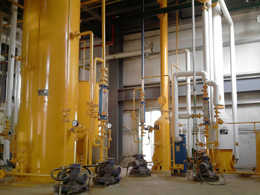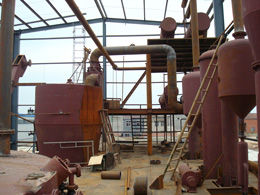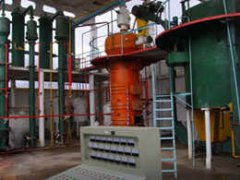Processing Soybean into Oil
Soybean oil plant involves a series of steps to produce commodities for food, industrial, and animal feed uses. Soybeans are processed into two primary products, soybean meal, used as an animal feed, and crude soybean oil which is further processed for human consumption. Variations in processing methods also yield a host of co-products.
1. Soybean milling processes haven’t changed much over the years. The equipment has become sig- nificantly larger and highly computerized, but three basic mechanical methods remain for removing oil from soybeans, and other oil-rich seeds for that mat- ter. (The raw, ripe, soybean contains 15-20% of its weight as oil.) These methods are referred to as the hydraulic process, the expeller process, and the sol- vent process.
2. The hydraulic process crushes the whole soy seed into flakes, and then thoroughly cooks the mass by steam. The resulting mass is formed into cakes, which are then placed in hydraulic presses where enormous pressure is applied to squeeze out as much oil as possible. The oil-free residue, in the form of hard cakes or slabs, is then ground into meal. Today, the hydraulic process is rarely used.
3. In the expeller process, the seeds are cracked, dried, and then heated in a steam-jacketed apparatus. The oil is separated by expellers, or screw presses, where enormous pressure is exerted by a worm shaft revolving in a horizontal barrel. Considerable heat is produced by the friction as the material passes through the expeller under such great pressure. The friction cooks the meal thoroughly. In soybeans, the heating process eliminates the trypsin inhibitor factor, which is detrimental to protein digestion, particularly for non-ruminants. The oil-free residue, which is in flake form, is ground into meal or may be pelletized.
4. In the solvent process, the seed is cracked,heated mildly, and rolled into thin flakes. The flakes then pass into an extracting tower, where the oil is chemically removed by a volatile solvent. The resi- due is then heated and dried to remove all traces of the solvent. The solvent process removes the oil more com-pletely than do the hydraulic and expeller processes. The first two processes may leave up to five percent oil in the soybean meal, while the solvent process may remove all but 1% (or less) of the oil. The less oil remaining in the meal, the higher its protein level for animal feed purposes. Expeller- and hydraulically- processed soybean meal are about 44% protein, while the solvent method soybean meal runs about 50% protein. In processing soybean into oil by the solvent method, the extracted soybean flakes are heated a second time in a treatment referred to as “toasting,” again in a steam-jacketed apparatus. The toasting cooks the flakes enough to produce satisfactory feeding results for swine and poultry. After the toasting, the flakes are ground into soybean meal, or they may be pelletized.
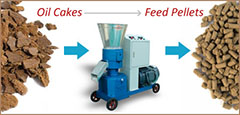



Want to set up a mini mustard oil mill of your own ? With the rapid ...
Mustards are part of the oilseed family and are regarded both as a s...
Interested in begin a small size corn oil extraction plant but dont ...
Do you want to make the edible rice bran oil at from using your mill...

